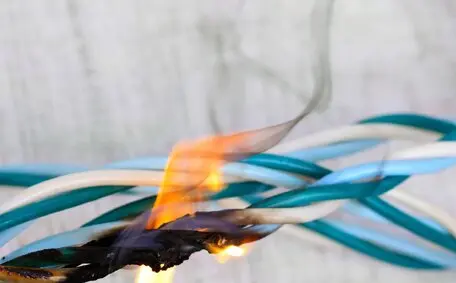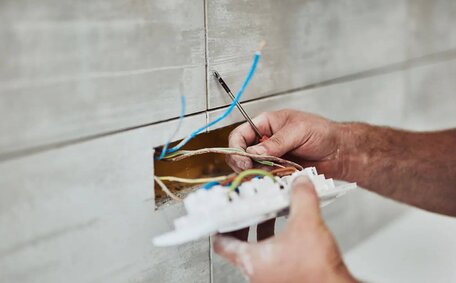
How to Identify Electrical Non-Compliance Issues
Electrical safety shouldn’t be compromised. This guide empowers you to identify common electrical non-compliance issues in your wiring, components, and installations.
Read MoreAustralia’s aging housing stock is full of character and history, but presents unique challenges, particularly with outdated electrical systems. If left unaddressed, these issues can lead to safety hazards, reduced energy efficiency, and potentially lower property values. Understanding and identifying these common electrical problems is important to ensure your home remains safe and functional.
Regular upkeep and professional electrical maintenance are key to preserving both the safety and value of older properties. Let’s explore some of the most frequent electrical concerns in older homes and how to address them effectively.
In many older homes, you’ll find knob and tube wiring, which isn’t up to today’s safety standards. This wiring style doesn’t include grounding, posing fire and electrocution hazards. Similarly, aluminium wiring, another old system, can oxidise and overheat, increasing fire risks.
Modern households demand more power than ever, with numerous appliances and electronic devices needing a stable and safe supply. Unfortunately, old wiring systems weren’t designed to handle today’s load, leading to potential overheating, frequent breaker trips, and even electrical fires. Signs of deteriorating wiring include flickering lights, discoloured outlets, or a persistent burning smell.
If you notice any of these symptoms, it’s crucial to seek professional advice, as continuing to use outdated wiring can severely compromise your household’s safety.
Older homes are notorious for their lack of power points, leading to excessive use of extension cords and power boards. Relying on these temporary solutions can overload circuits, causing short circuits or even electrical fires. Excessive extension cords not only create a trip hazard but can also overheat and present serious safety issues.
Modern homes need ample power points to support the increased number of household appliances, from kitchen gadgets to smart home devices. Insufficient power points often lead to multiple devices being plugged into a single outlet, a situation that the old circuits simply cannot handle safely.
Upgrading your home’s electrical system to include additional power points is a key step in preventing overloaded circuits and improving overall safety.

Old circuit breakers often cause trouble in older homes. Unlike today’s panels, these old fuse boxes can’t handle modern electrical demands, which leads to frequent tripping and possible system failures. This isn’t just inconvenient; it’s dangerous, especially if a breaker doesn’t cut power during an overload.
Symptoms of a failing circuit breaker include frequent tripping, scorch marks around the panel, or a humming noise from the box. If you’re still using a fuse box, consider upgrading to a circuit breaker, as these are designed to handle modern loads and offer better protection against electrical faults.

Earthing is an essential part of any electrical system, providing a path for electricity to flow safely to the ground in case of a fault. Unfortunately, many older homes have outdated or inadequate earthing systems, increasing the risk of electrical shock.
Outdated earthing methods, such as metal water pipes or poorly connected rods, may not meet current Australian Standards, posing significant safety risks to residents. Proper earthing ensures that the electrical system remains stable and prevents electric shock from exposed parts or during appliance failure.
Modern earthing requirements involve more secure and effective grounding methods. If your property has never been updated, a professional inspection can help identify and resolve these safety concerns, making your home safer.
Over time, the wiring in old homes can wear out. Breakdowns in insulation might cause wires to be exposed, creating hazardous contact points. Rodents often contribute to this, as they chew through insulation, leading to shorts that increase fire risks.
DIY fixes or amateur electrical work can result in exposed wiring and other risky conditions. This kind of work often falls short of safety standards, compromising the electrical system’s integrity.
It’s important to have any exposed or damaged wiring inspected and repaired by a licensed electrician. Addressing these issues promptly can prevent fires, shock risks, and further deterioration.
The electrical service capacity of older homes is often inadequate to meet modern power requirements. Many homes built decades ago were designed with minimal amperage, sufficient for limited lighting and basic appliances. Today, an increased number of high-powered devices necessitates greater amperage.
Upgrading the amperage of your home involves calculating the current load and ensuring the system can safely handle the household’s electrical needs. Without this upgrade, the risk of overloaded circuits and tripping breakers is significantly heightened, reducing both the convenience and safety of your home.
Faulty light switches are another common electrical issue in older homes. If your light switches are warm or hot to the touch, flicker lights when used, or emit buzzing sounds, these are warning signs of an underlying problem.
Loose connections, outdated switches, or circuits that are overloaded can cause these problems, posing both annoyance and safety risks. Hot switches are especially worrying, as they point to issues that might cause overheating and even fires.
If you notice any of these symptoms, it’s best to have a licensed electrician inspect and replace any faulty switches.

Australian Standards for electrical installations are updated regularly, and older homes may have installations that no longer meet the current requirements. Common compliance issues include outdated wiring, insufficient grounding, and improper circuit breaker arrangements.
Non-compliant installations not only compromise safety but can also affect your insurance coverage. In the event of an incident, insurance claims may be denied if it’s found that the electrical system did not meet the necessary standards.
To ensure compliance with safety regulations, it’s crucial to have your home’s electrical installations reviewed and updated where necessary. Professional electricians can bring your property up to code and ensure it remains safe for all occupants.
Tackling electrical issues in older homes takes expertise, and getting professional inspections is the first step toward a safe, compliant system. Regular check-ups by licensed electricians can catch problems early, cutting down on the risk of fires, shocks, or other dangerous situations.
Investing in professional electrical upgrades and maintenance is beneficial for safety and provides long-term cost savings. Outdated systems are inefficient, often resulting in higher electricity bills, and emergency repairs tend to be more costly compared to planned maintenance and upgrades.
Bright Force Electrical specialises in older home electrical systems and understands the unique challenges they present. With years of experience handling heritage properties, Bright Force’s licensed professionals are well-equipped to provide tailored maintenance solutions that enhance safety, efficiency, and compliance. Whether you need to upgrade your wiring, install new power points, or address faulty circuit breakers, their team is ready to help.
Contact Bright Force Electrical today for a free consultation and take the first step towards securing your home’s electrical future.
Did you enjoy reading our article “Common Electrical Issues in Older Homes”? We have many related articles you may also be interested in reading, like the below:
Electrical safety shouldn’t be compromised. This guide empowers you to identify common electrical non-compliance issues in your wiring, components, and installations.
Read MoreDo you know the dangers of faulty or damaged wiring? Don’t risk you and your homes safety! Learn how to detect if there is an issue with your electrical wiring by using your comprehensive guide!
Read MoreDiscover simple methods for diagnosing electrical issues at home. Tackle faults quickly, improve safety, and ensure your system runs smoothly.
Read MoreWe will call back as soon as possible.



